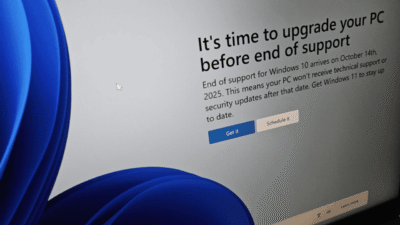The Status_Access_Violation error in Microsoft Edge is quite common and it can appear owing to a variety of reasons. This post will discuss some easy steps that you can take to get rid of the error and have a smooth browsing experience with Microsoft Edge.
You would often see this message that says Status_Access_Violation when your Microsoft Edge browser crashes suddenly as you try to open a web page. It means that their might be a problem with the browser’s source code or maybe some unspecified program code tried to register for memory. These occurences also can have multiple causes. More often than not the problem minor and the solution is very simple.
Before we jump into the steps you can take to remove this error, let’s quickly go through the reasons behind it.
When does the Status_Access_Violation error appear?
The common reasons that cause the Status_Access_Violation error to appear are
- Corrupt or misconfigured extensions running on your browser
- Malware infection
- Unnecessary intervention by your browser’s security
- Your browser being outdated
- An issue with your browser’s experimental feature
Let’s get on with the possible solutions now
Refresh the browser tab and/or restart the browser
A lot of minor glitches in your browsing experience can actually be circumnavigated with a hard reload. Try refreshing the browser-tab that is showing the error. Clicking in the refresh icon on the top bar should do the trick. Try it multiple times if the error persists. After that, close the browser and restart it.
If both the steps do not cure the problem for you, move on to the next solution.
Also Read – DYI Guide to Fix the Cannot Parse Response Error in Safari
Update your browser
Microsoft Edge just like Google Chrome takes automatic updates unless, of course, you have turned the auto-update feature off intentionally. If your browser is not up to date, it can cause a lot of errors to appear and it can also open you up to security threats. Use the following steps to resolve it.
Open a browser tab => Go to the three dots on the top right corner => Select settings from the drop-down menu => Click on About Microsoft Edge on the left sidebar.
At this point, Edge will either take an auto update or show you that its up to date. If it takes an update, restart the browser after that. If the browser was up to date. Move on to the next method.
Try disabling the ad-blocker
It is possible to turn on an ad-blocker from your Edge browser but it clashes with some websites that run anti-blocking JavaScript code. To confirm that possibility, open a new tab and try to access two three other websites that you regularly visit. If they open fine, then the ad blocker might be an issue.
Go to settings => Manage ad-ons => Tool bars and Extensions => Right click on Ad blocker Extension => Disable
If it doesn’t do the trick, you have got some more work to do.
Try renaming Edge’s executable file
Go to your C drive => Program files => Microsoft => Edge => Application. In short, the location of your Edge executable file is C:/Program Files (x86)/Microsoft/Edge/Application
Once you locate the msedge.exe file, right click on it and click on the rename option. Change the name, restart your computer, and relaunch the browser.
This should ideally fix your issue. However, if it doesn’t, there are more things that you can try.
Disable experiemental features
Microsoft Edge comes with a bunch of experimental features that are not part of the regular browser. You have the option to enable them to enhance the functionality of the browser but risk its performance. Having some of these experimental features may be the cause behind the Status_Access_Violation error. To fix this
Type edge://flags/ into the search bar => find the experimental features that are enabled => Click on disable from the menu beside them.
Restart the browser after this so that the changes can take effect.
Also Read – DYI Guide to Fix the ERR_NAME_NOT_RESOLVED Error
Disable extensions
One of the extensions running on your browser may be interfering with the source code of the website you are trying to access. Disabling the extensions one by one and refreshing the tab each time you do that will let you figureout which one of the extensions might be the culprit. You can then, keep the extension disabled for the period of browsing that particular website.
Disable Render Code Integrity as a last resort
Windows has a feature called Render Code Integrity that prevents unauthorized code from executing while loading a page. While this feature plays a vital role in safeguarding you from viruses and other malware, it can also prevent some websites from loading.
If you absolutely need to open a web page and none of the other steps have worked, you can try this. Follow the steps
Create a shortcut to Edge’s executable page on your desktop => Right click on it => Select Properties => Shortcut => Add the following at the end of the string that appears in the Target field: –disable-features=RendererCodeIntegrity => Ok => Apply
This will disable the feature and make you vulnerable to cyber attacks. The idea is to revert this possible as soon as you can.




